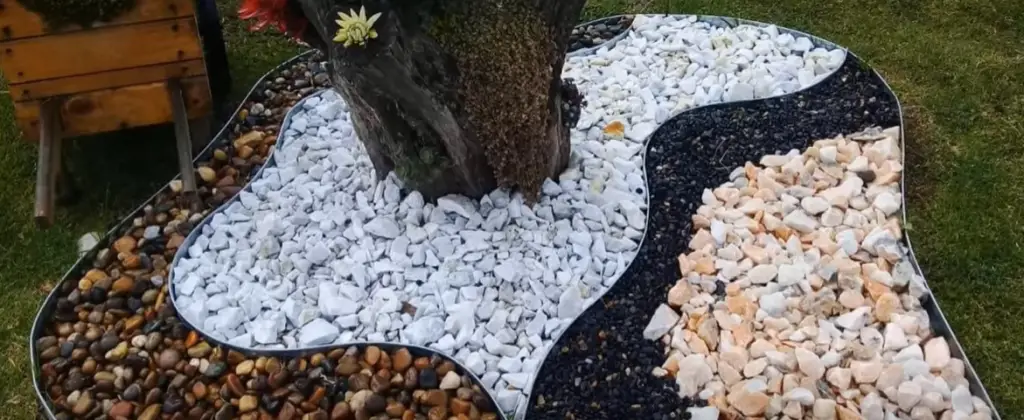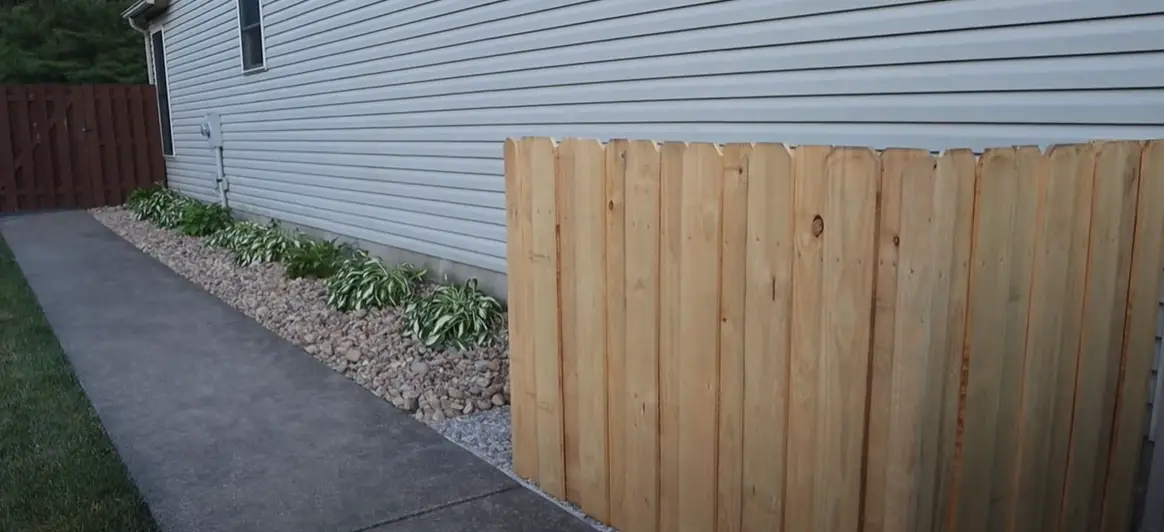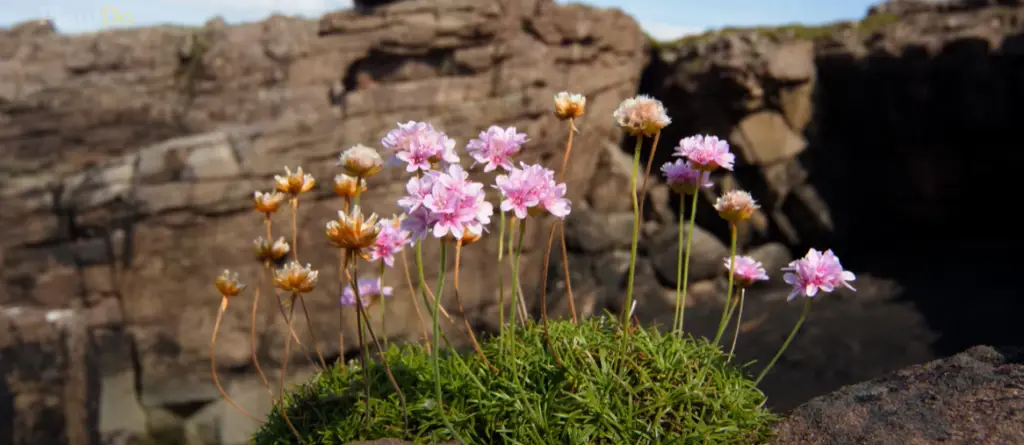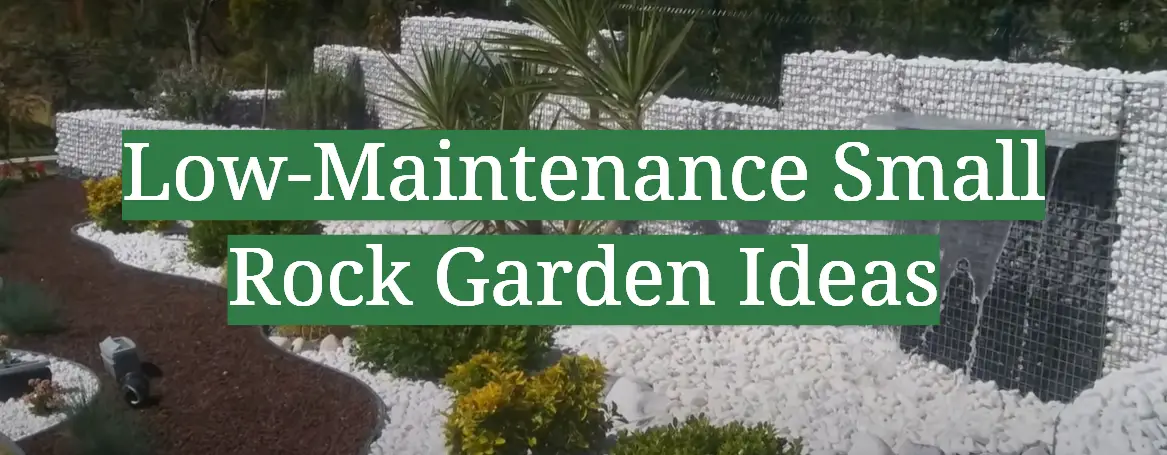Rock gardens are a beautiful way to add life and color to your outdoor space, and they are also a great option for those who want a low-maintenance garden. If you’re looking for ideas on how to create a rock garden, or if you just need some tips on how to make yours more low-maintenance, then you’ve come to the right place. This guide will answer common questions about small rock gardens and offer tips on how to make them look great with very little effort.
Planning a rock garden
Choose and evaluate your site
When planning a rock garden, the first step is to choose and evaluate your site. Choose an area of your yard that receives at least six hours of sunlight per day, as most plants for rock gardens thrive in full sun. Also, consider how much space you have available and what type of soil is present. Avoid low-lying areas that tend to collect water and those that are prone to extreme fluctuations in temperature or frost.

Creating your design
Once you have selected a suitable site, it’s time to create your design. Think about how large or small you want the rock garden to be, how many different types of rocks you would like in it, and if there are any special features such as pathways or seating areas planned. Consider the shape of the bed and how it will fit into the existing landscape.
Consider scale
When selecting the plants and rocks for your rock garden, consider both height and scale. Rocks that are too large or small can look out of place and make it difficult to create an eye-catching design. Try to choose rocks that are uniform in size, but also experiment with varying shapes and textures to add a more interesting dimension.
Research the plants
Once you have chosen your site, research what type of plants are best suited for rock garden design. You’ll need to consider the climate in which you live and the size and shape of your garden. Some popular plants for rock gardens include alpine plants, succulents, herbs, grasses, mosses, ground covers, shrubs, and annuals. To ensure a successful landscape design, choose plants that have similar water needs so they can thrive together in the same environment.
Prepare the soil
Before planting anything in your rock garden design, prepare the soil. Start by removing any existing weeds or debris from the area. Add organic matter such as compost or manure to enrich the soil and improve its texture. Test the soil to determine its pH level. If the soil is too acidic or alkaline, you may need to amend it with lime or sulfur accordingly.
Select your rocks and stones
Once your soil is ready, begin selecting your rocks and stones for the garden design. You can use various sizes of rocks from large boulders to small pebbles, as well as a variety of types such as limestone, sandstone, slate, and quartz. Be sure to select rocks that are weather-resistant and will last in your garden’s environment.
Choose a style.
When designing your rock garden, it is important to select a style that fits in with the rest of your landscape. You can choose from formal or informal designs, naturalistic or contemporary looks, and many color schemes. Be sure to choose elements that work together to create a cohesive look [1].

How to build a rock garden?
Make a list of supplies
Before you start building your rock garden, make sure to create a list of all the supplies you will need. You’ll likely need stones and rocks, soil, plants or flowers, mulch, and moss, gravel, sand, and/or pebbles for drainage. Additionally, you may need a shovel, wheelbarrow, rake, and other gardening tools.
Pick a location
Choose a spot in your yard that has good drainage and some natural shade from trees or buildings. Keep in mind that if you want to add plants to your rock garden they will need ample sunlight throughout the day. Moreover, make sure the location is close to a water source so that you can easily water your plants.
Clear the land
Remove any existing shrubs, grasses, weeds, and roots from the area where you want to build your rock garden. If necessary, use a shovel or spade to dig out any hard soils and break up thick clay. Smooth out the surface with a rake so it’s flat and even. It is important to make sure that the ground is completely level before you start building your rock garden.
Add the rocks and stones
Now it’s time to add the rocks and stones to your rock garden. Start by placing larger ones first then work on adding smaller ones around them for balance. You can arrange them into patterns for a more decorative look or leave them randomly scattered throughout the garden bed. There are lots of creative ways that you can create an aesthetically pleasing design with your rocks and stones.
Add soil
Spread a few inches of soil over the cleared land for drainage purposes. The soil should be nutrient-rich and good for planting. You can use a garden soil mix or create your own soil blend with compost, peat moss, and fertilizers.

Add plants
Now you can start adding plants to your rock garden. Choose plants that thrive in dry, sunny areas. Succulents and cactuses are some of the best options as they require minimal watering and maintenance. Place larger ones at the bottom of the garden bed then layer on smaller ones as you go up. Consider using flowering perennials to add vibrant color to your rock garden.
Mulch and decorate
Finish off your rock garden by mulching around all the plants with organic materials like shredded bark or leaves which will help retain moisture and block out weeds. You can also add gravel, sand, or pebbles to areas that need extra drainage. Finally, consider adding decorative elements like small sculptures or figurines for a more whimsical look to your rock garden.
Finish up with gravel or pebbles
Gravel or pebbles can be added around the rock garden bed as an edging material or drainage solution. This helps absorb water before it can flow away so that it can seep into the ground near the roots of your plants. This also helps prevent soil from washing away and keeps the rock garden more organized.
How to plant a rock garden?
Soil matters
When planting a rock garden, it’s important to be mindful of the type of soil you’re working with. The best soils for rock gardens are free-draining, light, and airy. If you have heavy clay or soggy soil in your area, you may need to amend it before planting your rock garden by adding organic matter such as compost or aged manure. If you do decide to amend the soil, make sure that what you add does not compact too tightly when wet; this can prevent water from draining properly and cause root rot in plants.

Pick the right plants
Once you’ve got the soil ready, it’s time to pick the right plants for your rock garden. Plants that love well-drained soils are ideal, such as sedums, hens and chicks, and small succulents. Avoid large woody shrubs or trees; these require more water than a rock garden can provide. Additionally, you’ll want to pick plants that will fill in the cracks between your rocks and add texture. Look for various shapes, colors, and sizes of foliage when selecting your plants.
Lay down a foundation
The next step is to lay down a foundation for your plants. Place stones of various sizes on top of the soil in an attractive design. It’s important to leave some gaps between each stone so that water can still drain through. You may also want to add mulch or gravel around the rocks to help retain moisture in the soil and prevent weeds from growing up too close to the plants.
Plant away
Now it’s time for the fun part: planting! Start by digging a hole in the soil where you want to place each plant, making sure that the root ball is deep enough so that it’s covered with a couple of inches of soil. Fill in any gaps between stones with your plants, and press down on the soil around each one to ensure they are firmly planted in place. Water thoroughly after planting and be sure to monitor them often as they become established.
Complement and contrast
Finally, you can add some finishing touches to your rock garden. Add a few pieces of driftwood or an attractive statue to draw the eye, and consider planting a couple of low-growing groundcovers like creeping thyme or sedum around the larger stones for contrast. With just a little bit of preparation and planning, you can have an attractive rock garden that will last for years to come [2].
What are popular rock garden plants?
Some of the most popular rock garden plants are succulents, alpines, and evergreen perennials. Succulents such as Sedum and Sempervivum are great choices for a low-maintenance rock garden, while alpine varieties like Campanula and Saxifraga provide bright pops of color. For evergreen perennials, try cushiony mosses or grasses like Daphne or Dianella. Of course, you can also choose to add shrubs and trees to your rock garden for added texture and interest.
Popular choices include dwarf conifers like Juniper and Picea varieties, as well as heathers or rhododendrons for larger areas. Whatever your taste, there are endless possibilities when it comes to choosing plants for your rock garden. So get creative and see what works best in your space!
Maintaining a rock garden
Watering
To ensure the health of your rock garden, it is important to water regularly. Depending on your climate and time of year, you should water your rock garden at least once a week. In hotter climates or during times of high temperatures, more frequent watering may be necessary to prevent drought damage. It’s also important to make sure that the soil around the rocks does not become saturated with water as this can cause root rot or other issues for the plants.

Fertilizer
Applying fertilizer regularly will help promote healthy growth in your rock garden. You should use an all-purpose balanced fertilizer according to package instructions and apply it once a month during the growing season, usually spring through late summer.
Weed Control
Weeds can quickly take over a rock garden, so it is important to stay on top of weed control. Mulch around the rocks can help reduce weeds and conserve water, but you should still keep an eye out for any new growth. Hand-pulling weeds when they are small is usually the most effective way to remove them from your rock garden.
Dealing With Pests
Pest infestations can be a common issue in rock gardens as pests like slugs and snails love to hide among the rocks. To prevent pest damage, check your plants regularly for signs of pest activity and use organic methods such as diatomaceous earth or insecticidal soap to control populations if necessary. If possible, try to keep your rock garden free of debris that may attract pests.
Trimming and Pruning
Most plants in a rock garden are relatively low-maintenance, but trimming and pruning can help control their growth and maintain an attractive appearance. Trim away any dead or dying foliage, as well as any shoots that start to sprawl out of the rock formation. When pruning, always use clean shears and make sure not to cut back too far as this can damage the plant.
Small Corner Rock Garden Ideas
Succulent Garden
A succulent garden is a perfect way to add a unique and eye-catching look to your small corner rock garden. The simple concept of using a variety of succulents in various sizes, textures, and colors can help create an interesting outdoor living space. Succulents also require very little maintenance since they are drought tolerant and don’t need much water or fertilizer; this makes them ideal for those with busy lifestyles.
Zen Garden
Bring some zen into your small corner rock garden with a Zen-inspired sand and stone design. This type of garden features raked sand patterns, rocks, and other elements like wind chimes to promote relaxation and tranquility. It’s easy to maintain since there aren’t any live plants, and it can be customized to fit your style.

Fairy Garden
Create a whimsical, enchanted world in your corner rock garden with a fairy-themed design. You can build it around a miniature fountain or pond and add elements like benches, archways, and figurines to create the perfect atmosphere for fairies to frolic in. This is also an easy-to-maintain option since there are no live plants involved.
Pond Garden
Adding a small pond or water feature to your corner rock garden will give it an extra touch of serenity and beauty. You can choose from many different options such as preformed ponds or custom-built ones with rocks forming the edges. Floating plants like water lilies and lotuses can be added to provide some color to the area while adding oxygen to the water.
Moss Garden
If you’re looking for something low-maintenance and beautiful, a moss garden may be just what you need. Moss is an excellent choice as it requires minimal effort to care for and can create a lush, verdant look in your small corner rock garden. You can use stones or other objects to create interesting shapes with the moss and add pops of color with different varieties of colored mosses.
Herb Garden
A herb garden is perfect for those who want to create an edible outdoor space in their small corner rock garden. Herbs like basil, chives, mint, rosemary, thyme, sage, oregano, and parsley all have different flavors and smells that can be used in cooking. You can enjoy these herbs both fresh and dried, and they require minimal effort to care for since most of them are quite resilient.
Cacti & Succulent Garden
Create a unique look with cacti and succulents in your small corner rock garden. Cacti have an interesting texture and color that will add visual interest to the landscape while still being low maintenance. You can also mix various succulents like aloe, hens and chicks, sedums, and more to create a unique look. These plants require minimal effort to care for since most of them are quite resilient, making them ideal for busy lifestyles.
Tiered Fountain Garden
Tiered fountains are a great way to add a touch of elegance to your small corner rock garden. A tiered fountain is made up of several levels of rocks that create the illusion of flowing water as it cascades down each level. This type of garden can also provide a soothing atmosphere for those looking to relax in their outdoor space.
Butterfly Garden
Bring beautiful butterflies to your small corner rock garden with a butterfly-themed design. You can use native plants that attract these delicate creatures, and adding elements like bird baths and stones with shallow depressions will give them a place to drink from. This is an excellent way to promote biodiversity while still creating an aesthetically pleasing outdoor area.
Japanese Tea Garden
Bring some traditional Japanese style into your corner rock garden with a tea garden theme. This type of garden usually features a pond or stream, stone structures, bamboo fences, geometric patterns, lanterns, and trees like maples or cherries for that authentic look. A tea house can also be added as a gathering spot for friends and family to enjoy the tranquil atmosphere this garden provides.
Container Garden
For those with limited space, a container garden is an excellent choice. You can place potted plants around the corner rock garden and create interesting displays by varying the sizes and colors of the containers. This type of garden also gives you the flexibility to change things up easily, as you can simply move or add more pots if you want to switch up your design.
Vertical Garden
Create a vertical oasis in your small corner rock garden with a vertical garden. Use trellises or hanging planters with trailing vines or greenery for that eye-catching look. This type of gardening also takes up minimal floor space, so it’s perfect for those who don’t have much room to work with.

Dry Garden
A dry garden is a great way to keep your small corner rock garden low-maintenance while still having an attractive outdoor space. This type of garden usually consists of plants that thrive in arid climates and can survive with minimal water, making it ideal for those who want something easy to care for. You can also add gravel or stones to give your dry garden an interesting texture and visual appeal.
Knot Garden
Add a touch of sophistication to your outdoor space with a knot garden. This type of garden features low-growing shrubs or edging plants arranged in intricate patterns and finished off with gravel paths. This is perfect for those who want to create an elegant atmosphere in their small corner rock garden while still keeping things simple [3].
What are some ideas for large rock gardens?
- Create an eye-catching feature by using large boulders to form a wall or divide different sections of the garden.
- Make use of existing natural rocks and stones to build up rock formations and structures like bridges, steps, and benches.
- Incorporate various shapes and sizes of rocks in your design to create visual interest and texture.
- Use plants that are suitable for rocky soil such as succulents, cacti, groundcover plants, ornamental grasses, or mosses to provide color and texture among the stones.
- Build a dry streambed with large rocks arranged in a winding pattern around curves or leading down small hillsides for a unique feature.
- Incorporate a pond or water feature within the rock garden as a focal point and to bring in wildlife such as birds, frogs, and other aquatic creatures.
- Place large rocks around an outdoor fire pit for both visual interest and functional purposes.
- Create pathways with stepping stones or flagstones set among the rocks for easy access throughout the garden.
- Add small touches like birdbaths, fountains, sculptures, or even solar lights amongst your rock formations to give them extra character and charm.
- Utilize different kinds of shrubs and trees with delicate leaves against larger boulders to create contrast in your design.
FAQ
How do you make a mini rock garden?
To create a mini rock garden you should first select some rocks that are the right size and shape for your desired garden. Using a garden trowel, dig shallow holes in which to place the rocks. Once all of your rocks have been placed in the soil, scoop the soil up around them to secure them in place. Plant any desired plants or flowers between the rocks and top with mulch if desired. Water regularly to keep everything looking its best!
What is the easiest low-maintenance garden?
The easiest low-maintenance garden is a raised bed garden. These gardens are easy to construct and require very little maintenance overall. They need to be watered regularly, but weeds can easily be removed from the raised beds manually or with weed killers if necessary. In addition, harvesting fruits and vegetables from a raised bed is much easier than other gardening methods. Finally, since raised beds protect plants from pests, they require fewer pesticides and fertilizers than in-ground gardens.
How do you style a rock garden?
When styling a rock garden, it’s important to plan out the space and consider what type of plants you want to use. Start by placing larger rocks in the center and then adding smaller rocks around them. Consider using other elements such as benches, stepping stones, and paths to create a more interesting space. When selecting plants for your rock garden, choose species that are suited for the climate and thrive in dry conditions. Succulents, cacti, alpine plants, ornamental grasses, and flowering perennials are all great choices for rock gardens. Finally, add a layer of mulch between the rocks to help retain moisture throughout the season.
What is the best fertilizer for a rock garden?
The best type of fertilizer for a rock garden is one that is specifically formulated for use with cacti and succulents. These fertilizers are designed to provide the necessary nutrients for these types of plants, while also being low in nitrogen to prevent the growth of invasive weeds. Organic fertilizers are also an option, although they may need to be applied more frequently than synthetic options. It’s important to read the instructions on any fertilizer you choose and follow them carefully when applying it to your rock garden.
How can I make my garden look nice with no money?
There are a few simple steps you can take to make your garden look nice without spending any money. Start by tidying up the space – trim back overgrown plants, pull out weeds, and clear away debris. Next, add some color with flowers or other plants that will thrive in your climate. If you don’t have any plants available for free, try using vegetables or herbs from your kitchen for a fresh look. Finally, add texture and interest with rocks or driftwood pieces that you may find around your yard or can collect from nearby beaches. With a little bit of creativity, you can create an attractive garden without breaking the bank!
Useful Video: 100 Rock Landscaping Ideas For Front Yard – Small Front Yard Rock Garden Ideas 2022
Conclusion
Low-Maintenance Small Rock Gardens is a great way to bring beauty and tranquility to any outdoor space. They can be easily installed in a variety of locations, require minimal upkeep and maintenance, and have the added benefit of being able to withstand most weather conditions. With careful planning and consideration, these mini-ecosystems can offer a unique aesthetic appeal that is both peaceful and practical. Whether it’s for relaxation or providing an alternate habitat for wildlife, small rock gardens are a wonderful addition to any landscape. With their simple structure and low care requirements, they are sure to make your outdoor space an inviting getaway no matter what size it is!
References:
- https://www.gardendesign.com/landscape-design/rock-gardens.html
- https://www.gardeningetc.com/advice/how-to-build-a-rock-garden
- https://dengarden.com/gardening/Small-Corner-Rock-Garden-Ideas










Leave a Reply
View Comments